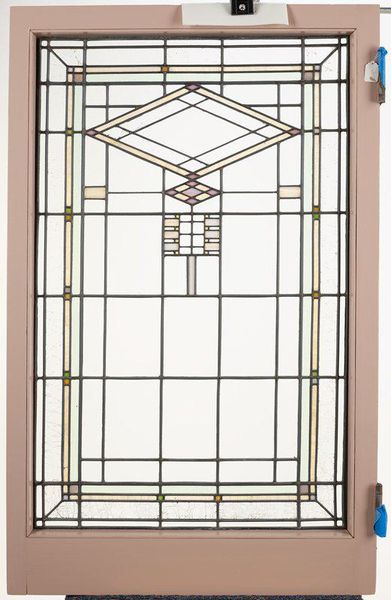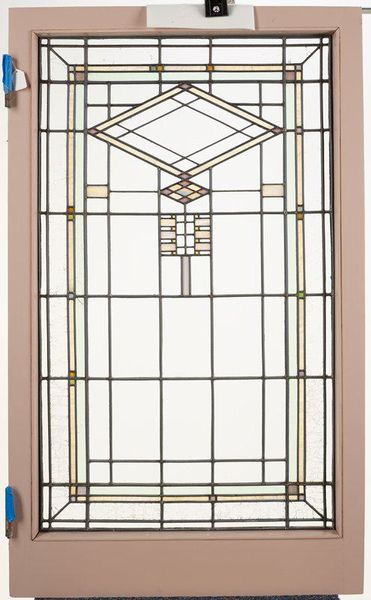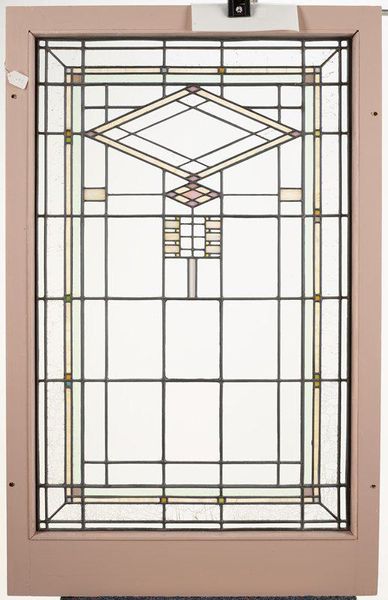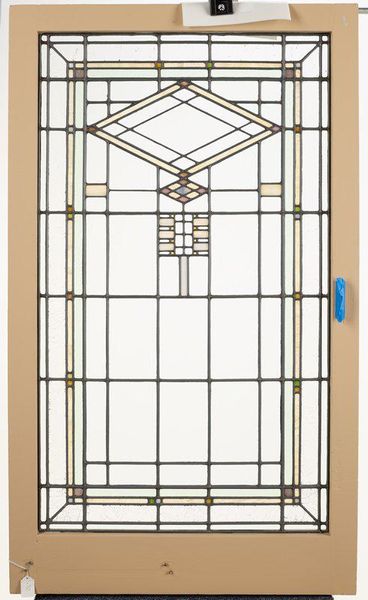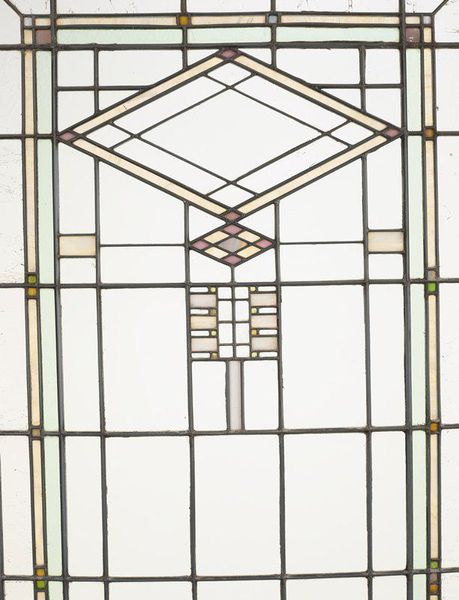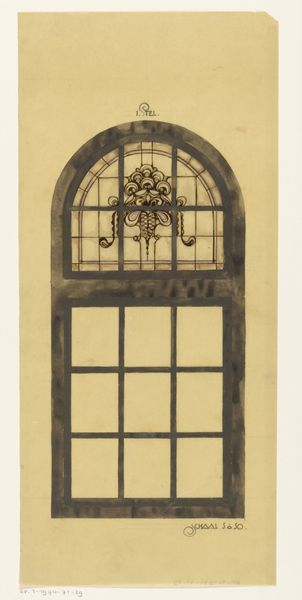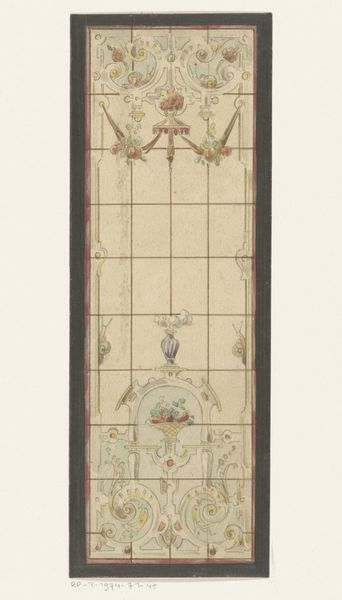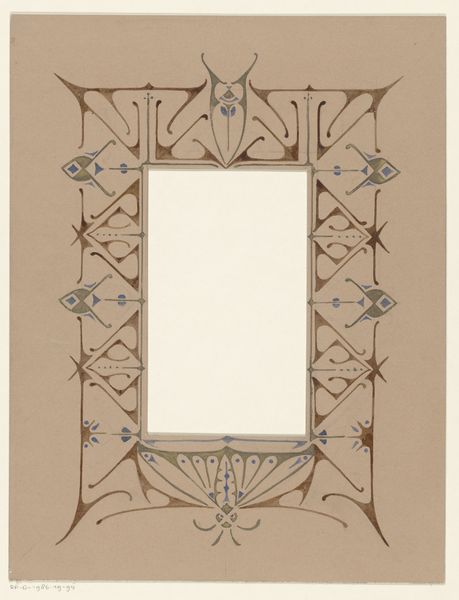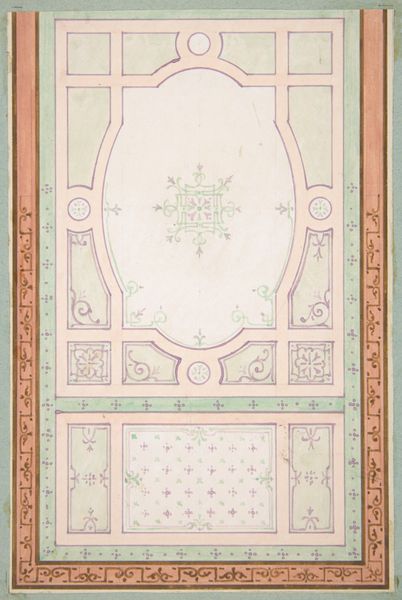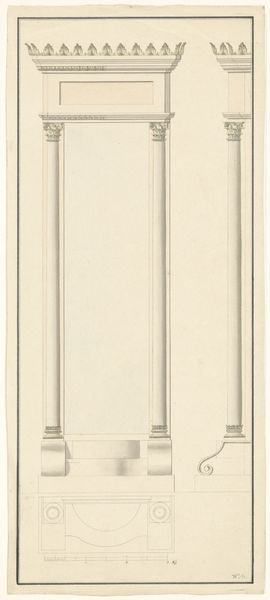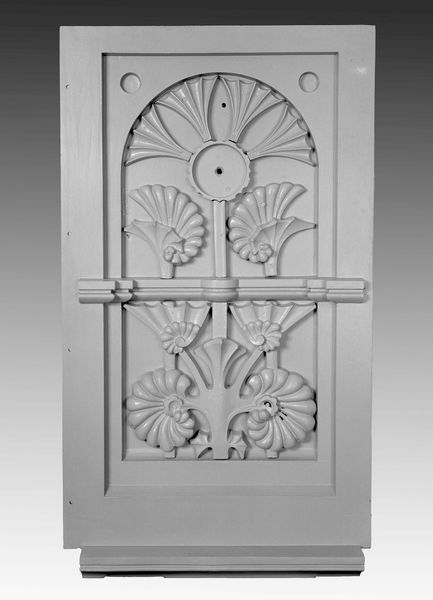
glass, architecture
#
arts-&-crafts-movement
#
glass
#
geometric
#
architecture
Dimensions: 41 x 24in. (104.1 x 61cm)
Copyright: No Copyright - United States
Editor: We’re looking at “Window” by William Gray Purcell, created around 1913. It’s currently housed at the Minneapolis Institute of Art, a stunning example of leaded glass from the Arts and Crafts movement. The rigid geometric design almost gives it the feeling of a blueprint or an architectural plan. How do you interpret this piece within its historical context? Curator: This window reflects the Arts and Crafts movement's ideals. Can you see how it contrasts with the mass-produced items of the industrial era? Architects like Purcell championed handcrafted, unique designs that emphasized natural materials and integrated art with architecture. They actively pushed back against industrialization and sought to democratize design by making beauty accessible to all. Editor: Yes, the emphasis on craftsmanship is undeniable. It’s almost a celebration of the handmade object against the backdrop of increasing industrialization. Was there a specific socio-political motivation behind the aesthetic choices? Curator: Absolutely. The movement saw the moral and social benefits of art in everyday life. Simplicity and functionality became key principles. Also, the choice of geometric shapes is significant. It references the influence of both nature's underlying structures and the machine age. Where do you think it sits on a line between these influences? Editor: I see it leaning toward simplified natural forms within an increasingly mechanized world. I guess it brings me back to that almost uneasy feeling of a design representing progressive thinking within an anti-progressive social framework. Curator: A fascinating point! That tension you identified reveals the heart of the movement's complex relationship with modernity. It’s a powerful reminder that art is always intertwined with the cultural forces that shape it. Editor: That tension is really thought-provoking. Thanks for providing such a meaningful historical lens for looking at the piece.
Comments
No comments
Be the first to comment and join the conversation on the ultimate creative platform.
